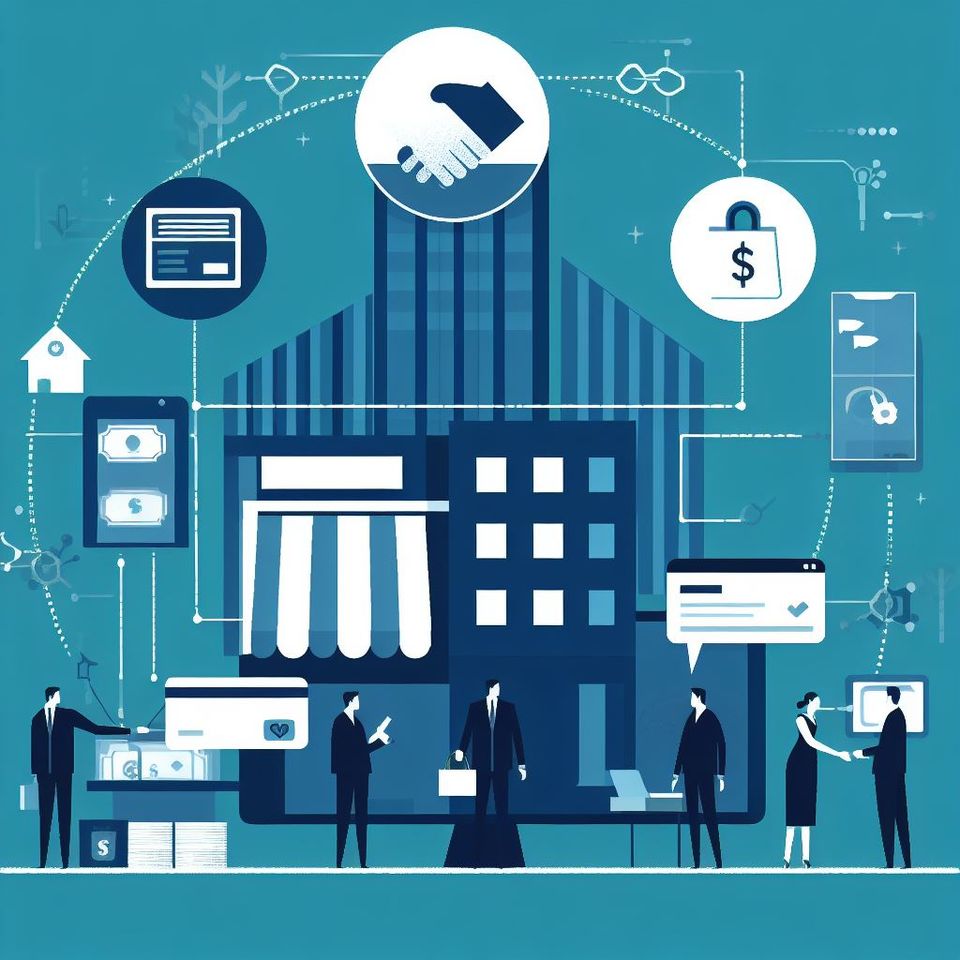Trust, Efficiency, and Growth: The UX Revolution in B2B Payments

In today's fast-paced business landscape, where personalization, convenience, and ease of use reign supreme, user experience (UX) has become a critical factor for success. Nowhere is this more evident than in the world of B2B payments, where executives must prioritize UX initiatives to stay competitive and drive positive bottom-line results.
In this article, we will explore why investing in UX is vital for business payment executives in the context of B2B eCommerce. We will delve into five compelling use cases where UX shines, demonstrating its transformative power in driving success.
1. Simplifying Supplier Onboarding
In B2B payments, supplier onboarding is a crucial step. By optimizing UX during the onboarding process, businesses can simplify and streamline the experience for suppliers. Intuitive navigation, clear instructions, and easy-to-access documentation can significantly reduce friction and enhance supplier satisfaction. This, in turn, leads to improved supplier acquisition and retention rates, streamlined procurement processes, and increased operational efficiency.
Key Takeaway: A seamless and intuitive onboarding experience enhances supplier acquisition and retention, streamlines the procurement process, and increases operational efficiency.
2. Enhancing Transaction Speed and Accuracy
In B2B eCommerce, transaction speed and accuracy are paramount. By optimizing UX to reduce friction and minimize errors, businesses can significantly enhance operational efficiency. Features such as auto-fill saved payment details, and intuitive checkout processes can help users complete transactions quickly and effortlessly. This leads to improved cash flow, reduced order processing time, and stronger supplier relationships.
Key Takeaway: Optimized UX that reduces friction and minimizes errors in transactions improves operational efficiency, cash flow, and supplier relationships.
3. Empowering Self-Service and Account Management
B2B customers value self-service options and the ability to manage their accounts independently. By providing a user-friendly interface for self-service and account management, businesses can empower their customers and reduce the load on customer support teams.
Intuitive dashboards, easy-to-use filters, and comprehensive reporting capabilities enable customers to access vital information, analyze data, and make informed decisions. This increased self-sufficiency results in improved customer loyalty, reduced operational costs, and streamlined payment processes.
Key Takeaway: A user-friendly interface for self-service and account management empowers customers, reduces operational costs, and streamlines payment processes.
4. Implementing Personalization and Customization
B2B customers today expect tailored experiences that cater to their unique needs and preferences. By leveraging UX techniques like personalized recommendations, targeted promotions, and customizable payment workflows, businesses can create highly personalized experiences for their customers.
Personalization enhances customer satisfaction, fosters loyalty, and drives cross-selling and upselling opportunities. By delivering a tailored experience throughout the B2B payment journey, businesses can foster stronger relationships, increase order values, and drive revenue growth.
Key Takeaway: Personalized experiences driven by UX techniques enhance customer satisfaction, loyalty, cross-selling, and upselling opportunities.
5. Building Trust and Security
Security is a top concern for businesses engaged in B2B payments. A robust UX that emphasizes security features and communicates trust is vital. Implementing features like two-factor authentication, secure payment gateways, and transparent data-handling processes instills confidence in customers.
By prioritizing security in the UX, businesses can mitigate the risk of fraud, build a positive reputation, and attract new customers who prioritize secure payment options.
Key Takeaway: A robust UX that emphasizes security features and communicates trust instills confidence, mitigates fraud risk, and attracts customers who prioritize secure payment options.
Wrap Up
In today's B2B payments landscape, prioritizing UX initiatives is no longer a luxury but a necessity. By investing in UX, business payment executives can unlock a multitude of benefits, from improved supplier acquisition and retention to enhanced operational efficiency and revenue growth.
Simplifying supplier onboarding, enhancing transaction speed and accuracy, empowering self-service and account management, implementing personalization and customization, and building trust and security are key areas where optimizing UX is vital for success in B2B payments.
At WDIR, we've cultivated deep expertise in UX and B2B payments with some of the biggest names in FinTech. Get in touch today to discuss how we can transform your payment user experience into one that delights customers, increases average order value (AOV), and encourages customer loyalty.
